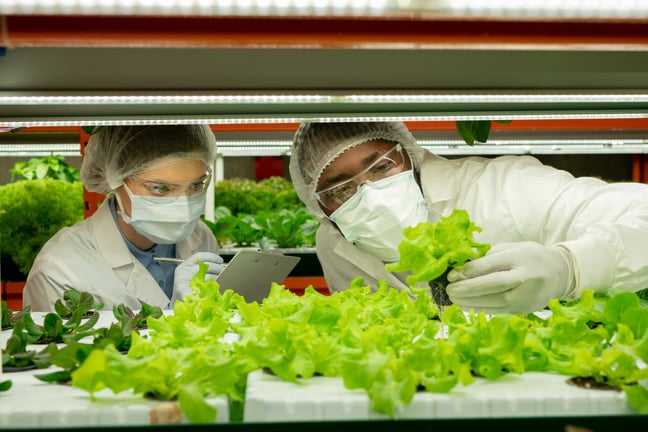Keeping up with government regulatory compliance is constant journey for companies across all industries, but particularly in the Food & Beverage space as it relates to the Food Safety Modernization Act (FSMA). The Food and Drug Administration has broad authority under FSMA to police and regulate companies in this space. Here’s a little more background on FSMA and how Sage X3 software is a valuable tool to assist with compliance.
FSMA has given the FDA authority to regulate the way foods are grown, harvested and processed. The law grants the FDA a number of powers, including mandatory recall authority. The law was prompted after many reported incidents of foodborne illnesses during the first decade of the 2000s. Tainted food has cost the food industry billions of dollars in recalls, lost sales and legal expenses.
Here is a look at the 7 rules that your company needs to follow:
Rule #1: Food Defense
The intent of this rule is to safeguard food from deliberate and intentional acts of adulteration, intended to cause public harm. FDA-registered food facilities must plan for systems and strategies that assess contamination vulnerabilities at each respective site.
How can Sage X3 Help?
Quality control tracking and analysis during the production process, as well as full lot traceability and recall capabilities are part of core Sage X3. If a vulnerability is identified, X3 can identify exactly which products, and by extension customers, are affected.
Rule #2: Sanitary Transportation
The intent of this rule is to establish standards and requirements for any company that transports foods, including shippers, loaders and carriers. These companies must ensure the safety of the food they transport.
How can Sage X3 Help?
Transportation Management Suite for Sage X3 includes automated Delivery Routing and Load Planning functions for use during transport. This includes real-time mobile access to X3 from anywhere during the transportation process to access relevant information.
Rule #3: Accredited Third-Party Certification
The intent of this rule is to provide accreditation standards to third-party certification bodies to conduct voluntary consultative safety audits, helping food companies prepare for regulatory audits and/or achieve certification.
How Can Sage X3 Help?
The auditing capabilities in Sage X3 allow users to track changes to any master or transactional piece of data in the system. Who changed it? When was it changed? What was changed? All of this information can be quickly surfaced in reports from the Sage X3 database, hosted in a secure datacenter with real-time disaster recovery capabilities.
Rule #4: Foreign Supplier Verification Programs
The intent of this rule is to mandate that food importers verify food imported into the United States is compliant with FDA regulations. This includes hazard analysis, risk-based preventative controls, standards for produce safety provisions, as well as ensuring the food is not misbranded as it relates to food allergen labeling.
How Can Sage X3 Help?
Allergen tracking and labeling is a widely lauded feature of Sage X3, as it traces allergens in finished products all the way back through the entire supply chain to the suppliers’ raw materials and supplier lot numbers. Quality checks, including extensive Q&A on Technical Sheets, can be set up during the raw materials receipt-of-goods process. All supplier information is stored and tracked in X3, with the ability to provide audit reports from a single database.
Rule #5: Produce Safety
The intent of this rule is to establish minimum standards for growing, harvesting, packing and holding of produce for human consumption.
How Can Sage X3 Help?
In-process quality checks can be mandated in X3 during the production, whether it’s during processing of raw materials, intermediates or finished goods. Finished goods that have passed their final quality checks can be set with Expiration Dates, to be leveraged by X3’s FEFO (First Expired, First Out) picking functionality.
Rule #6: Preventative Controls for Human Food
The intent of this rule is to establish requirements for current good manufacturing practices (cGMPs), as well as implement and establish hazard analysis and risk-based preventative controls for human food.
Rule #7: Preventative Controls for Animal Food
The intent of this rule is to establish requirements for current good manufacturing practices (cGMPs), as well as implement and establish hazard analysis and risk-based preventative controls for animal food
How Can Sage X3 Help?
In addition to the aforementioned quality checks during production process, X3 provides extensive formula R&D, versioning, and management functions to be used in conjunction with cGMPs. Risk-based preventative controls can be implemented in X3 in a number of ways, one of which is the core CMMS (Computerized Maintenance Management System) module, which allows for preventative maintenance and tracking for all equipment used in the production process
Keeping up with ever-evolving compliance standards is a challenge for company in a variety of industries, but firms in the Food & Beverage space have seen strong compliance results with Sage X3. Call or email me to discuss in more detail.




